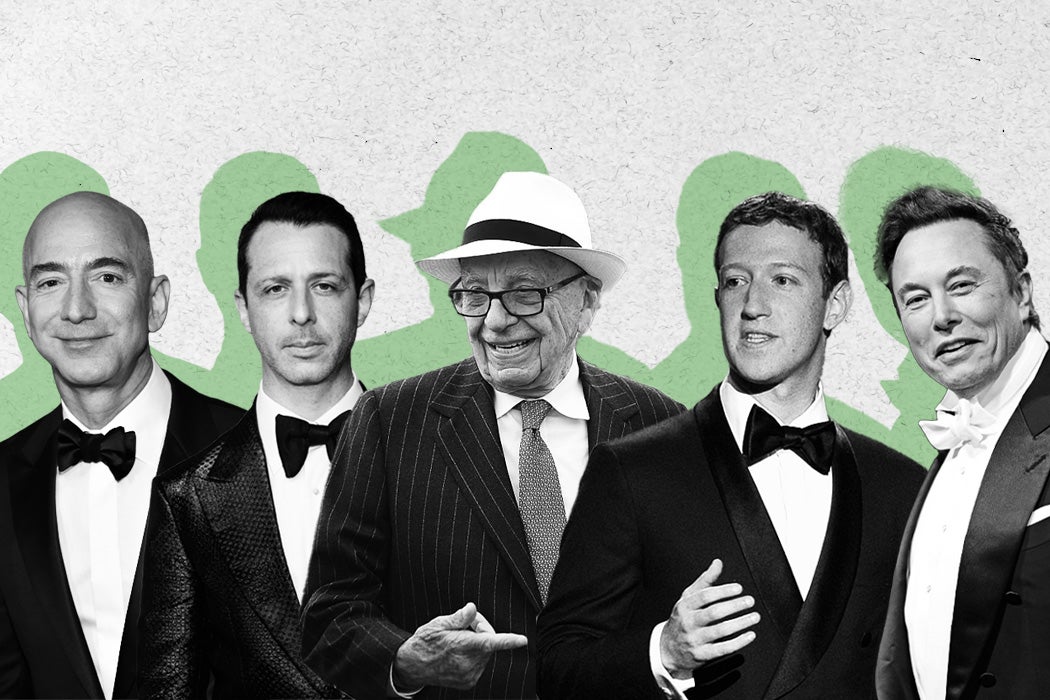In its most dystopian moment, the award-winning HBO drama Succession imagined the ownership of a major media corporation—a fictional rendering of Fox News—using the power of their live election night broadcast to try to subvert democracy, in order to serve their own short-term ambitions. If Succession was a penetrating character study in the pathologies of great wealth, it was also a provocative exploration of the political and economic power of media institutions. As the show’s creator Jesse Armstrong explained, one of the goals was “to consider what happens when something as important as the flow of information in a democracy hits the reductive brutality of the profit calculation.”
As we’ve seen, media sits at the heart of the democratic system, providing our means of representation, our modes of information, and our platforms for conversation. But in the US media system, that democratic work—the representations they craft, the information they disseminate, and the voices they amplify—are all influenced by underlying economic logics. Consider, for example, the estimated two billion dollars in “free media” attention that Donald Trump was given during his 2016 campaign, a profit-oriented strategy intended to attract audiences more so than inform the citizenry. Les Moonves, then the CEO of CBS, explained at the time that the Trump candidacy “may not be good for America, but it’s damn good for CBS.” The same strategy undoubtedly shaped CNN’s more recent decision to offer Trump another hour of free exposure. Under pressure from its new corporate ownership to reinvent the brand, that move, at least for one night, tripled CNN’s regular prime-time audience.
Or consider Elon Musk’s purchase of Twitter—an object lesson in the power of media ownership in which one of the world’s richest humans single-handedly took command of a globally critical platform for political information and influence. Musk, of course, is not a unique case. Mark Zuckerberg retains control of Meta, the tech company that owns Facebook, Instagram, and WhatsApp, while Amazon’s Jeff Bezos owns The Washington Post. And then there’s Rupert Murdoch, the Australian newspaper magnate who still sits at the head of NewsCorp, a global force whose US holdings alone include the immensely profitable Fox News Channel, The Wall Street Journal, and the New York Post, among others. Thus the spectacle of Musk and Murdoch taking in the Super Bowl together, earlier this year.

From the vantage of history, ownership of a society’s means of communication has always equated to wealth and power. Note 30 Rockefeller Place, the Manhattan landmark built in the 1930s to house “radio city,” the burgeoning broadcast network NBC, and its corporate parent, the Radio Corporation of America. Today, the current owner of NBC, Comcast, occupies not just one, but the two tallest buildings in the city of Philadelphia. Comcast is what economists would call a multimedia conglomerate, controlling broadcast, cable, film, and digital content producers, as well as the internet and cable TV infrastructure that enables all of that content to reach its end users.
Comcast’s business model of “content and carriage” would have been illegal in the United States through most of the twentieth century. The very first national act of broadcast regulation—the 1927 Federal Radio Act—established that the then-nascent radio industry would be privately held and programmed in pursuit of profit, but also subject to significant public interest requirements. All broadcasters, the law declared, would have to be licensed by the federal government, and legally responsible to serve “the public interest, convenience, and necessity.” Through the twentieth century, federal law constrained the scope of ownership, limiting the number of broadcast outlets a single company could own, and preventing “cross-media” ownership. Federal laws such as the now-defunct Fairness Doctrine likewise tried to limit the raw pursuit of profit and ensure the vitality of the mediated public sphere.

This regulatory regime, and its attempt at balance between private value and public interest, was all but dismantled late in the twentieth century. The Fairness Doctrine was eliminated in the 1980s, as were many public-service content requirements. The deregulatory wave reached its peak with the passage of the federal Telecommunications Act in 1996. That sweeping legislation was the first significant effort to recraft the laws governing US electronic media since 1934. It eliminated most caps on broadcast ownership and limitations on cross-industry conglomeration. Emphasizing technological innovation and economic growth, the act ushered in a moment of unbridled consolidation and the narrowing of control over the means of democratic information into the hands of just a few “megamedia” conglomerates.
The analytic tradition focused on the indivisibility of the economic from the political is, perhaps not surprisingly, called “political economy”—a school of thought that understands that economic agendas always influence political outcomes, and that economic agendas themselves are enabled and constrained by wider political conditions. Media political economists of the media have long voiced the concern that media ownership is a form of undue (and unelected) political power, a heavy finger on the scale. Consider again the moves Elon Musk has made since taking over Twitter, dissolving the Trust and Safety Council, replatforming a range of alt-right influencers, and recently hosting the formal launch of Ron DeSantis’ presidential campaign. Or the case of the Sinclair media group, whose influence derives from its ownership of hundreds of local television stations. Each of those are routinely required to run editorials advocating for the political perspectives of Sinclair’s owners, but clothed in the familiarity of the local news anchor.
Weekly Newsletter
Beyond ownership, political economy points us toward deeper questions about commodification and its democratic impact. That is, should the purpose of media outlets and communication platforms be to produce products designed to generate revenue (the more the better), or is there some expectation, or even requirement, that they provide us with a public good—the necessary resources for democratic citizenship? Here the concern is with the inevitable outcomes of commercial logic itself and the society wide impact of an industry designed to catch audience attention and deliver it to advertisers. In an attention industry, media content becomes a commodity to be bought and sold, and so too do audiences. The people formerly understood as citizens are repositioned, at best as consumers and at worst as revenue streams.
Scholars have made a strong argument that while this model of media economics excels in producing entertainment options for pleasure-seeking consumers, it is also prone to market failure. It cannot sustain meaningful journalism, especially at the local level, nor media that facilitate reasoned deliberation. Instead, the pursuit of profit drives much news media to over-index spectacle and tabloid trauma, and play primarily to fear, anger, and outrage. That is the formula, for both cable television and social media alike, to capture attention and generate revenue. It can be economically lucrative, but it short-changes democracy. Democratic practices need incentivizing in ways that economic markets alone cannot provide.
Support JSTOR Daily! Join our new membership program on Patreon today.







